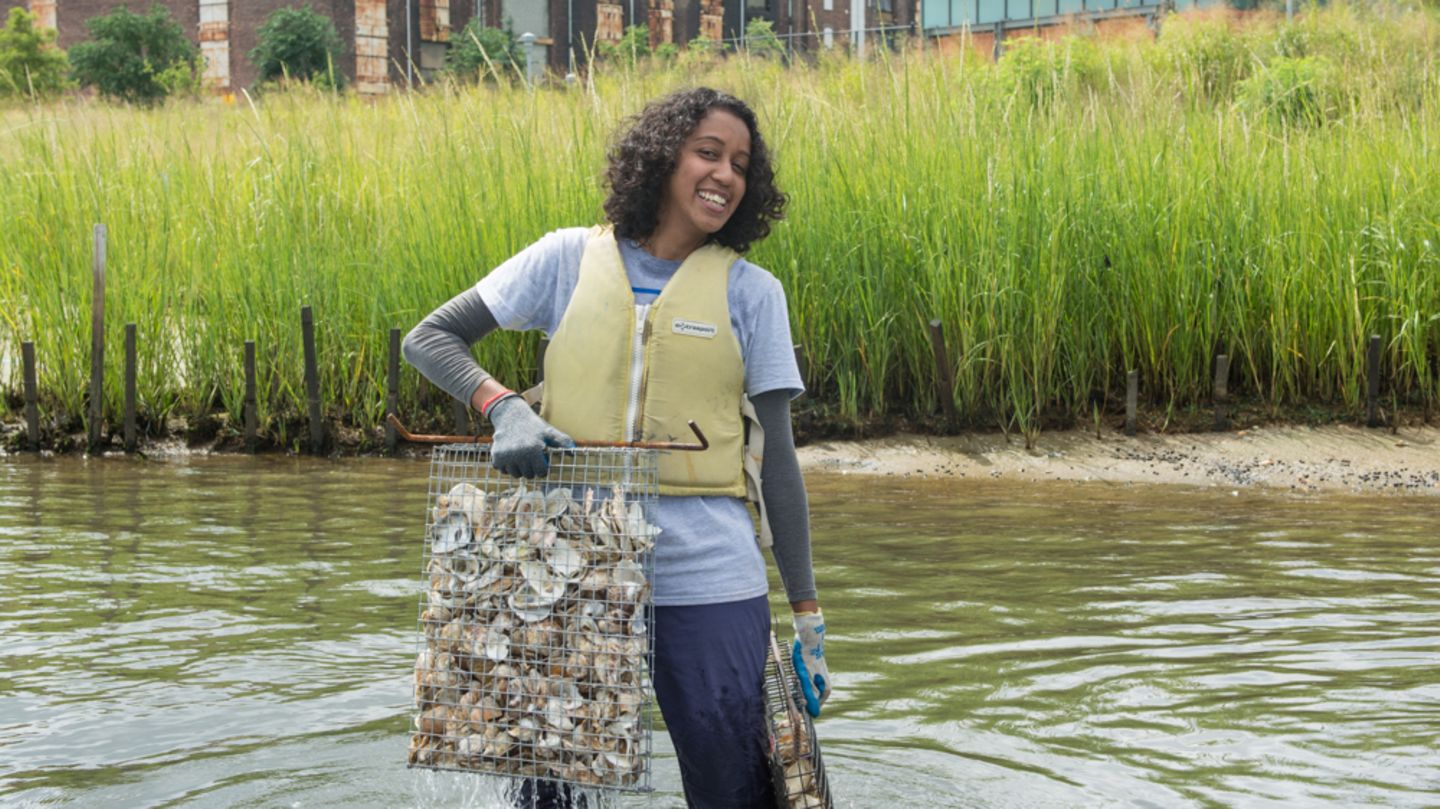Unusual environmental protection
Schoolchildren settle millions of oysters in New York – the reason is ingenious
– Oyster shells are the key to that Billion Oyster Project: Oyster larvae settle on them in the school laboratory, stick to them with an adhesive thread and grow into young mussels © Agata Poniatowski
–
–
In the 19th century, New York City was known for its oysters, but stocks collapsed. An initiative now wants to resettle the mussels in the port of the metropolis – with unusual ideas
–
The bay of what is now New York Harbor was once a paradise for oysters: in the fertile mixed waters of the Hudson River and the Atlantic, American oysters stretched over 900 square kilometers.
In the 19th century you could get them on every street corner, more than half of all oysters in the world were harvested in New York harbor. But their popularity and the increasingly polluted harbor water caused the oyster stocks to perish in the 1920s. Today almost all of the oysters served in the city’s many “oyster bars” come from farms.
However, their shells could now help grow the natural oyster population. In more than 70 restaurants in the city, oyster shells no longer end up in the garbage can, but in the containers of the Billion Oyster Project. The name says it all: the initiative, founded in 2014 at a New York high school and now cooperating with 70 schools, aims to make one billion oysters at home in the port of New York.
Oysters as ecosystem engineers
Because the mollusks are true “ecosystem engineers”: the diversity of species is increasing around the oyster beds. The mollusks filter up to 200 liters of water a day, reduce the nitrogen content and thus prevent the harbor from becoming algae. The oyster beds provide habitats for many invertebrates and fish. In addition, they prevent coastal erosion, thus protecting the city from flooding.
The oyster shells are the key to the project: Oyster larvae settle on them in the school laboratory, stick to them with an adhesive thread and grow into young mussels. Up to 20 of the self-raised oyster larvae fit on one bowl. Ideally, around five specimens survive at a time and are caged on the oyster beds of Billion Oyster Project get abandoned. There they are supposed to settle and multiply – also on an artificial surface made of porcelain pieces from old toilets. This unusual idea came from John McLaughlin, director of ecosystem services at New York’s environmental agency in 2013.
When the city exchanged large numbers of school toilets for modern, environmentally friendly toilets in 2013, he reserved the broken pieces for the project. The Billion Oyster Project has now relocated 28 million oysters – thanks to the efforts of more than 7,000 students, 1,000 volunteers and the New York oyster restaurants.

 –
–
